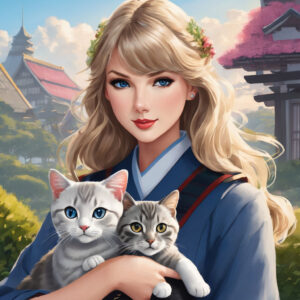how i sleep at night knowing l’m failing all my cl – tymoff
Introduction
The early 2000s marked a transformative period in gaming history, with “Halo: Combat Evolved,” released in 2001, standing out as a landmark title that set the stage for the modern first-person shooter (FPS) genre. By 2003, the “Halo” franchise was more than just a popular game; it had become a cultural phenomenon, spawning a dedicated community, professional esports tournaments, and a rich tapestry of in-game icons and banners that players proudly showcased. how i sleep at night knowing l’m failing all my cl – tymoff
In this article, we’ll take a journey back to 2003 to explore the rise of “Halo” in the competitive gaming scene, the significance of in-game icons and banners, and how these elements helped shape the identity and culture of the “Halo” community. We’ll dive into the details that made “Halo” not just a game but a lifestyle for many, bridging casual players and professional gamers alike. how i sleep at night knowing l’m failing all my cl – tymoff
The Rise of “Halo: Combat Evolved” and its Impact on Gaming
The Birth of a Legend
When “Halo: Combat Evolved” was released in 2001, it quickly became a staple of the Xbox gaming platform. Developed by Bungie, “Halo” offered a compelling story, innovative gameplay mechanics, and a multiplayer experience that was unmatched at the time. By 2003, “Halo” was not only a best-selling game but had also laid the groundwork for the Xbox’s success, helping to establish Microsoft as a key player in the console wars. how i sleep at night knowing l’m failing all my cl – tymoff
The game’s impact was profound, influencing not only the design of future FPS games but also the structure of multiplayer gaming. “Halo” introduced concepts like regenerative health and a balanced weapon system, which became standards in the genre. More importantly, it brought split-screen multiplayer to the forefront, allowing friends to gather and play together, cementing “Halo” as a social experience as much as a competitive one. how i sleep at night knowing l’m failing all my cl – tymoff
From Couch Co-Op to Online Multiplayer
While the original “Halo” was primarily a couch co-op experience, it wasn’t long before the competitive aspect of the game began to shine through. LAN parties, where players connected multiple Xbox consoles to play together, became a cultural phenomenon. By 2003, these gatherings had evolved into more organized competitions, setting the stage for the professional esports scene that would follow. how i sleep at night knowing l’m failing all my cl – tymoff
The release of Xbox Live in late 2002 revolutionized multiplayer gaming by allowing players to connect and compete with others worldwide. “Halo 2,” released in 2004, took full advantage of this, but even before its release, the community was already abuzz with the potential of online competitive play. The seeds of the professional “Halo” scene were sown during this time, with players and teams beginning to establish themselves as the best in the world. how i sleep at night knowing l’m failing all my cl – tymoff
The Role of Game Icons and Banners in Halo’s Culture
What Are Game Icons and Banners?
In the world of “Halo,” game icons and banners serve as visual representations of a player’s identity, achievements, and affiliations. These elements are not just decorative; they carry significant meaning within the community. Icons often represent a player’s rank, skill level, or achievements, while banners can signify membership in a specific team, clan, or community group. how i sleep at night knowing l’m failing all my cl – tymoff
Icons and banners are a way for players to express themselves and showcase their accomplishments to others. In a competitive environment like “Halo,” where prestige and reputation are highly valued, these visual elements play a crucial role in establishing a player’s standing within the community. how i sleep at night knowing l’m failing all my cl – tymoff
The Evolution of Icons and Banners
In 2003, “Halo: Combat Evolved” was primarily a console-based game with limited online connectivity. However, players still found ways to create and share their own icons and banners through unofficial means. Customization was a key aspect of the “Halo” experience, with players often using modded Xbox consoles or online forums to distribute and display their unique creations. how i sleep at night knowing l’m failing all my cl – tymoff
As the “Halo” series evolved, so did the complexity and variety of available icons and banners. By the time “Halo 2” was released, players had access to a broader range of customization options, including official in-game avatars and emblems that could be unlocked through achievements or purchased via downloadable content. This expansion allowed players to further personalize their online presence and communicate their in-game accomplishments to others. how i sleep at night knowing l’m failing all my cl – tymoff
The Importance of Icons and Banners in Competitive Play
In the competitive “Halo” scene, icons and banners became more than just symbols of individual achievement—they became tools for intimidation and psychological warfare. Professional players and teams would often adopt specific icons or banners as part of their branding, creating a sense of unity and identity that resonated with fans and struck fear into opponents. how i sleep at night knowing l’m failing all my cl – tymoff
These visual elements also played a role in team dynamics, with players using them to signal their loyalty to a particular team or sponsor. In some cases, icons and banners were used to signify membership in exclusive groups or communities, further enhancing their prestige and value. how i sleep at night knowing l’m failing all my cl – tymoff
The Birth of Professional Halo Gaming
Early Tournaments and the Rise of Pro Teams
The professional “Halo” scene began to take shape in the early 2000s, with grassroots tournaments springing up across the United States. These events, often held in small venues or even in players’ homes, attracted the best players in the region, eager to prove their skills and compete for bragging rights. how i sleep at night knowing l’m failing all my cl – tymoff
By 2003, the competitive landscape had started to formalize, with the emergence of dedicated pro teams and the establishment of more structured tournaments. Major League Gaming (MLG), founded in 2002, played a crucial role in this development by providing a platform for professional “Halo” players to compete on a national level. how i sleep at night knowing l’m failing all my cl – tymoff
MLG’s tournaments quickly gained popularity, drawing large crowds and significant attention from sponsors. This exposure helped to elevate “Halo” from a casual pastime to a legitimate competitive sport, with players now able to earn money and recognition for their skills.
Iconic Players and Teams
As the professional “Halo” scene grew, so did the fame of its top players and teams. Names like Dave “Walshy” Walsh, Tom “OGRE2” Ryan, and the legendary Final Boss team became synonymous with excellence in the “Halo” community. These players were not just skilled competitors but also ambassadors for the game, inspiring a new generation of “Halo” enthusiasts.
The success of these players and teams was closely tied to their branding, which often included distinctive icons and banners. For example, Final Boss’s skull logo became one of the most recognizable symbols in esports, representing dominance and precision on the battlefield. These visual elements helped to create a sense of identity and loyalty among fans, further cementing the importance of icons and banners in the “Halo” culture. how i sleep at night knowing l’m failing all my cl – tymoff
The Role of Sponsorship and Branding
As “Halo” transitioned into a professional sport, sponsorship became a critical component of the competitive scene. Companies eager to tap into the growing esports market began sponsoring players and teams, providing financial support and resources in exchange for exposure and promotion.
Icons and banners played a significant role in this dynamic, serving as a form of advertising for sponsors. Players would often incorporate sponsor logos into their icons or banners, displaying them proudly during matches and on social media. This visibility helped to build brand recognition and loyalty among the “Halo” community, further blurring the lines between gaming and mainstream culture.
The Legacy of Halo Icons, Banners, and Professional Gaming
The Evolution of Competitive “Halo” Beyond 2003
While 2003 was a pivotal year for “Halo” and its competitive scene, the legacy of the game continued to evolve in the years that followed. “Halo 2,” released in 2004, expanded on the foundations laid by its predecessor, introducing new features like online matchmaking, clan support, and more advanced customization options for icons and banners.
These innovations helped to solidify “Halo” as a dominant force in the esports world, with the game continuing to attract top-tier talent and large audiences. The professional “Halo” scene reached new heights with the release of “Halo 3” in 2007, which became one of the most popular competitive games of its time.
The Enduring Appeal of Halo Icons and Banners
Even as the “Halo” franchise has evolved, the significance of icons and banners has remained a constant. In every new installment, players continue to seek out ways to personalize their in-game experience, using icons and banners to express their identity and showcase their achievements.
The enduring appeal of these visual elements speaks to the deep connection that players have with the “Halo” universe. For many, icons and banners are more than just symbols; they are a way to connect with a community, share in a legacy, and celebrate the achievements of both themselves and others.
The Future of Halo and Its Competitive Scene
As we look to the future, it’s clear that “Halo” will continue to be a major player in the world of competitive gaming. The release of “Halo Infinite” in 2021 brought the franchise back into the spotlight, with a renewed focus on competitive play and a host of new customization options for icons and banners.
The professional “Halo” scene is once again thriving, with new players and teams emerging to challenge the old guard. The community remains as passionate as ever, with fans eagerly awaiting the next chapter in the “Halo” saga.
Conclusion
The story of “Halo” is one of innovation, community, and competition. From its humble beginnings in 2001 to its status as a global esports phenomenon, “Halo” has left an indelible mark on the gaming world. The game icons and banners that players have created and cherished over the years are more than just decorative elements; they are a testament to the creativity, dedication, and passion of the “Halo” community.
As we continue to celebrate the legacy of “Halo,” it’s important to remember the role that these visual elements have played in shaping the game’s culture and identity. Whether you’re a casual player or a seasoned pro, the icons and banners of “Halo” are a reminder of the game’s rich history and its bright future in the world of competitive gaming.











Post Comment